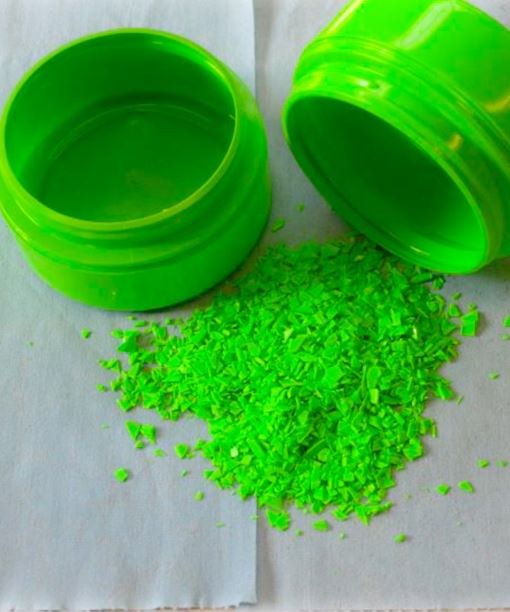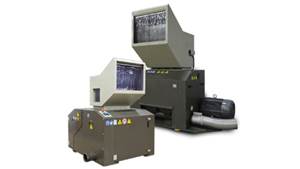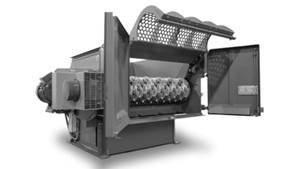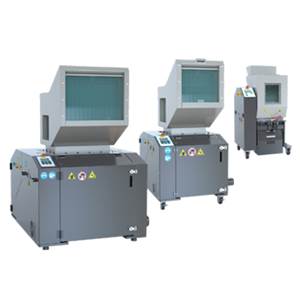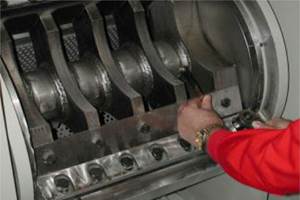How Granulators and Shredders Work
There are multiple ways for size reduction equipment to work:
Shearing — This action involves the actual cutting of material. As in scissors, shearing efficiency depends on the sharpness of the cutting edges working against each other and the tolerance of the space between them. Granulators primarily work by shearing material.
Tearing — Tearing involves pulling the material with such force that it comes apart. Some materials like fabric, soft metals, plastics, and tires, are more easily torn than others. Purpose-built tearing reducers are good for reducing mixed waste where small, uniform particle size is not important.
Fracturing — Some materials are brittle, such as glass, hard plastics, and certain metals, and tend to be broken or shattered in a shredder when the cutters aren't sharp or are loose. Unlike tearing, when something breaks it releases energy explosively, sometimes propelling the shards upwards into the faces of the fascinated onlookers. Always wear eye protection.
All three actions, shearing, tearing, and fracturing, are present when size reduction equipment is used. However, when the cutters are kept sharp and the tolerances tight, the dominant and most efficient reduction action should be shearing.
Each type of material is best reduced by a certain type and configuration of granulator or shredder. Different materials have their own physical characteristics which determine how they will react to the reduction process.
